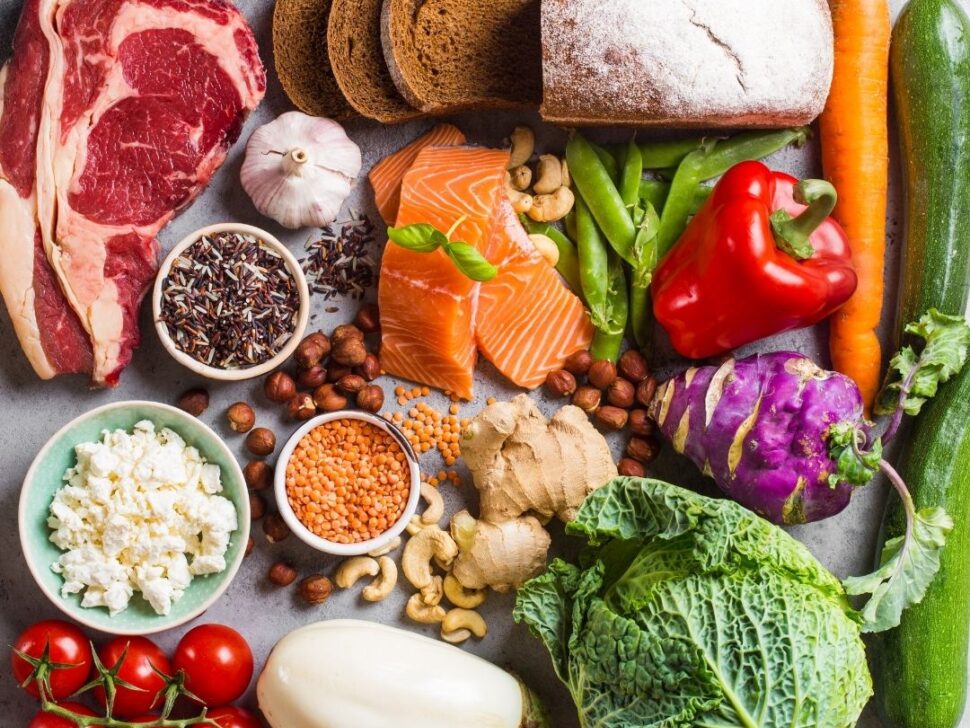
How to Erase Confusion About Real Food
In my conversations with people about good nutrition, I’ve heard a variety of interpretations of what it means to eat real food. Many people are uncertain about the best way to determine if food is real or not. For some food or food-like foods, it is obvious they aren’t real. What about foods that sound like they should be real, but aren’t? For example, chili from a restaurant. I found the below image at Wendy’s online listing the ingredients in their chili. Much more than just real ingredients. Some of which I can’t even pronounce. And why is there milk and soy in chili? For a chili that is real food, see my go-to chili recipe.

A rule of thumb to keep in mind is, most mass-produced food isn’t real.
So how do we erase confusion about real food? Let me answer a few of the questions people most commonly ask me.
Why does this matter?
Our bodies are designed to digest real food. Fake foods are like chemicals to our bodies and can negatively affect us in so many ways. Gut and brain issues, heart disease, neurological problems, cognitive impairments, metabolic disease, joint pain, the list could go on.
We need to change our mindset and begin viewing food as medicine. We eat to keep away and conquer disease or illness. Real food is the best medicine for us. Nature grown.
I am not saying modern medicine isn’t needed. I am not anti-medicine, but I am pro getting to the root cause of issues.
What truly are real foods?
Real Food in its two truest forms:
- The food is the ingredient so doesn’t have a food label. An orange is made up of an orange. Baby spinach is made up of baby spinach. Chicken breasts are made up of chicken breast. Quinoa is made up of quinoa. Eggs are made up of eggs. Whole milk is made up of whole milk. Turmeric comes from the turmeric. I think you get the point.
- Recipes created from only foods defined in #1 are real food.
So if something you want to eat doesn’t fit the above definitions, it is not considered a real food.
What about condiments, dressings, and sauces?
Most of the ones you purchase at the grocery store don’t qualify. That goes for ketchup, sour cream, mayo, and syrup. What counts are foods of good quality: pure honey, real maple syrup, mustard, marinara sauce, and avocado mayo. However, in keeping with definition #2 above, you can easily make many of these things yourself. For example, for a quick salad dressing simply blend together olive oil, vinegar of choice, salt and pepper, herbs, and maybe some dijon mustard.
What about dairy?
This topic could easily make up a whole other blog post. Even good quality dairy goes through processing, with the exception of raw milk and butter. Here is a general list of the best dairy to consume: organic whole milk, real cream, plain whole greek yogurt, real butter, and quality cheeses you find in the gourmet cheese section of your grocery store. If you can tolerate dairy, limit your intake of it to, at most, once a day. Dairy can provide some good fat and other vitamins but overall, it lacks the nutritional value found in real food.
What about food labels?
If it has any type of food label and doesn’t meet #1, chances are it isn’t real food. Here is how to interpret common food labels:
- “Sugar-free” and/or “low fat/fat-free.” Run very far away. It typically equals a chemical yuck storm, to put it nicely. Sure, an apple is fat-free and a steak is sugar-free, but you don’t need a label to tell you that.
- “Made from/with whole grains.” If the “food” itself isn’t a whole grain, it isn’t real food. For example, whole grain crackers and whole grain cereals. Are these better alternatives to their non-whole grain sisters? Yes, but they are still processed, and not as nutritious as real food. You should only eat them rarely.
- “Organic,” “gluten-free,” and “non-GMO.” If it is on items that don’t fit #1, is not a real food. Nor is it a permission slip to over-indulge just because it isn’t filled with as many chemicals as its non-organic, gluten-filled, and GMO-laden sister products. For example, organic chocolate sandwich cookies verses Oreos.
What does it mean to mostly eat real foods?
Mostly eating real food means only eating 1-2 meals/items each week that don’t fit #1 or #2. It isn’t 1-3 meals/items per day. Cereal for breakfast, a sandwich for lunch, and pasta for dinner isn’t mostly eating real food. Having pancakes on Sunday morning, pizza for dinner Friday night, and the rest of your meals real food based is mostly eat real foods.
Why are you being a party pooper?
When you read this you might think I’m taking all the fun out of eating. That all these rules and restrictions make eating no longer pleasurable. I have a few comments on that:
- Real food tastes amazing! Sadly, we have trained our taste buds to think differently. I used to be a processed food junky and thought I was eating healthy because I ate low-fat. Then I learned about Genetically Modified Organisms and clean eating, I knew that was best for me and worked hard to retrain my taste buds to love things like kale, beets, and Brussels sprouts. It takes time, but now, I can no longer imagine consuming the other junk.
- Enjoy some indulgent foods every now and then if your body can tolerate them. My rules with this: One, plan it. Two, make it worth it. Planning keeps you from doing it too often and gives you something to look forward to. Making it worth it means saving that indulgence for something really tasty, not just so-so tasty. For example donuts from a box in the grocery store versus gourmet donuts from a local donut shop. Frozen pizza for dinner versus local pizza from a wood fire oven. A burger from McDonald’s or a burger from a quality restaurant.
- You may need a mindset shift to stop associating special events with unhealthy food. Stop making excuses for eating poorly just because you passed a test, had a bad day, had a good day, it’s the weekend or a holiday, ran a 5k, celebrated national pie or burger or cheesecake day, etc. Finding excuses to eat, drink, and be merry whenever we feel like it takes the specialness out of special foods.
What do I do next?
If you want to evaluate how “mostly” you eat real food, log your food intake for 3 days. Highlight what you ate that meets the requirements for real food stated above with one color and then use another color to highlight all that wasn’t real. This will help you see where you need to make adjustments. Sometimes it can be shocking to see it on paper. You may think you are doing pretty well and find out you aren’t. Next, make a list of some healthy habits you need to establish or substitutes you can try. Pick one or two to focus on for four weeks and create a plan for implementing those habits to achieve success. Use an accountability plan, too.
You, your body, and your loved ones deserve the best and healthiest you!
To your best health and wellness,
Jen


